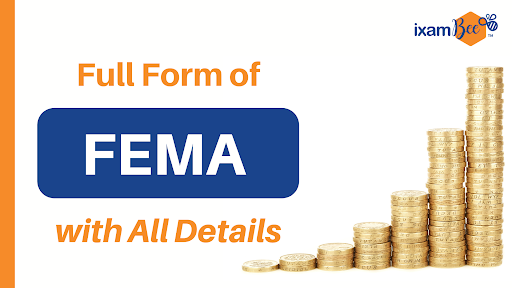What is FEMA?
FEMA stands for Foreign Exchange Management Act. FEMA is an act of the Parliament which was brought into existence with the objective of integrating and amending the law related to foreign exchange with the aim of encouraging external trade and payments along with supporting the development and maintenance of foreign exchange market in a well ordered manner. The act was passed on 29th December 1999 but it officially became an act from June 1, 2000. This act was actually passed with the intention of replacing another similar act- FERA: Foreign Exchange Regulation Act which could not match up with the ‘pro- liberalization’ policies of the Government. Due to this reason, a new act FEMA came into force. By pro-liberalization, we mean the period supporting liberalization. Liberalization in this case is related to the economic liberalization which meant the reduction of the government’s regulations, restrictions or interference in the private business sector. It may also imply that the government puts less stake in the private businesses. Liberalization may also mean decrease in the number of taxes and is usually linked with ‘privatization’.
Therefore, FERA was repealed in 1998 and FEMA was brought into force to change the way cases related to foreign exchange and trade were being dealt with. FEMA head-office called the Enforcement Directorate is situated in New Delhi which is headed by a Director. FEMA is applicable all-over India along with the agencies or offices situated outside India that are owned or controlled by such a person who is an Indian citizen.
FEMA and FERA
As discussed above FEMA replaced the previous act FERA as it was starting to become redundant. It was not keeping up with the existing scenario of liberalization. You will be able to clearly understand after reading about the differences between both the acts FERA and FEMA.
| FERA | FEMA |
|
|
Main Features of FEMA
- It gives the authority and power to central government to impose the restrictions on all such activities that include payments to or from any person residing outside India.
- All the transactions relating to foreign exchange and trade cannot be carried out without prior permission from FEMA.
- The foreign transactions / trade can be carried out only through an individual who is registered/authorized under FEMA.
- Deals involving foreign exchange under current account can be prohibited by Central Government, even after being carried out by an authorized person, based on general public interest.
- Indian residents will be allowed to carry out trade in foreign exchange, foreign security or to possess an immovable property outside India if it was owned while staying abroad or inherited from a person residing outside India.
Rules/Regulations under FEMA
- Foreign Exchange Management (Current Account Transactions) Rule, 2000
- Foreign Exchange Management (Permissible Capital Account Transactions) Regulations, 2000
- Foreign Exchange Management (Transfer or Issue of any Foreign Security) regulations, 2004
- Foreign Exchange Management (Foreign currency accounts by a person resident in India)Regulations, 2000
- Foreign Exchange Management (Acquisition and transfer of immovable property in India) regulations, 2000
- Foreign Exchange Management (Establishment in India of branch or office or other place of business) regulations, 2000
- Foreign Exchange Management (Manner of Receipt and Payment) Regulations, 2000
- Foreign Exchange Management (Export of Goods and Services) regulations, 2000
- Foreign Exchange Management (Realisation, repatriation and surrender of Foreign Exchange)regulations, 2000
- Foreign Exchange Management (Possession and Retention of Foreign Currency) Regulations, 2000
- Foreign Exchange ( Adjudication Procedure and Appeals) rules,
Penalty under FEMA
If any individual / taxpayer fails to follow the rules or regulations directed under FEMA, he/she will have to face a penalty which will be equal to thrice the amount on which the default has been done, if the amount of default is computable and if it is not computable or quantifiable the amount of penalty would be a sum of Rs 2 lakhs. If in a worse case the taxpayer fails to come clean and continues with his/her offence, the penalty would be expanded to Rs 5000 per day of default. The assets including the currency and property of the defaulter are supposed to be seized under the Central Government authority.
Also Read:
& Many More..
Get Free Online Test Series, Daily GK Update, PIB Current Affairs, Banking Awareness as well as latest updates for Bank PO, Bank Clerk, SSC, RBI, NABARD and Other Government Jobs. займ карта отличные наличныесрочно нужен займ с плохой кредитной историейзайм под птс сочи
